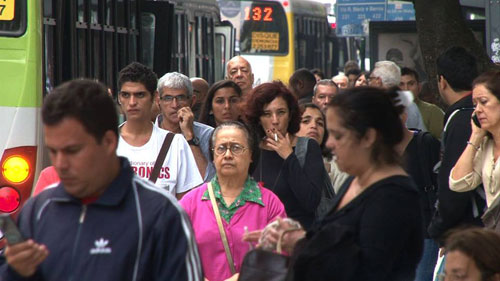También disponible en español

Today is No Tobacco Day, a moment in time when we’re supposed to remind ourselves of the many evils smoking brings upon us both as individuals and as member of society.
So when I started drafting this blog I asked myself: why can’t we have a No Tobacco Month, or even better a No Tobacco Lifetime? In other words, why are we not already enjoying a tobacco-free world or a tobacco-free Latin America?
We have made a lot of progress in the past few years towards curbing tobacco use, but there’s still a lot to be done -especially in view of the startling costs in human lives lost and spiraling health care costs for people sick from smoking.
Let me quickly review the situation in our region- starting with the good news.
Several Latin American countries are implementing strong tobacco control policies including fiscal measures, public smoking bans, as well as raising awareness and increasing knowledge on the dangers of tobacco use.
Some of these countries are considered to be high achievers in implementing initiatives that are part of the WHO Framework Convention for Tobacco Control. Argentina, Panamá and Uruguay are, for instance, good examples of the strong monitoring of tobacco use, whereas Brazil, Chile, México, Panama, Peru, Uruguay, and Venezuela are good examples of countries with strong warning labels on the harms of tobacco. And Brazil and Uruguay are good examples of treatments for tobacco dependency.
Uruguay is one of the most successful case studies for tobacco control in the region. As a result of its strong anti-tobacco policies, data from two household surveys show that, between 2006 and 2009, the prevalence of adults in Uruguay’s urban areas who smoke daily had one of the fastest decreases recorded worldwide, dropping about 10 percentage points. This can be credited to the leadership of then President Tabare Vazquez who told us in a recent presentation that, as a result of this striking change in smoking practices, mortality due to cardiovascular diseases decreased in the country.
Furthermore, Uruguay was the first middle-income country to establish smoke-free public spaces, an example then followed by other Latin American and Caribbean countries - Barbados, Colombia, Guatemala, Honduras, Panamá, Perú, and Trinidad y Tobago – who , like Uruguay, today have 100% smoke-free public spaces.
Now here’s the bad news. Argentina, Bolivia, Chile, Paraguay and Uruguay have the highest percentage of tobacco users in the region. And the news is particularly worrying for women. As rates for male smoking drops, smoking among women, especially young women, is on the rise. In Latin America and the Caribbean 16% of girls smoke compared to 8% in the US and 11% globally.
Worldwide, while sales of tobacco products have declined or stagnated in developed countries, they have accelerated in low- and middle-income countries. The tobacco industry has undertaken the aggressive marketing of their products in the developing world, often targeting women and youth, distributing free cigarettes at sporting, music or other mass events.
We in the health community are working hard to push back on these developments.
As part of a regional study on promoting healthy living, currently under preparation, the World Bank and Uruguay’s Ministry of Public Health are logging the process to design and implement tobacco control policies. I can tell you this though: tobacco control policies in Uruguay are the result of strong leadership and commitment of policymakers, including solid partnerships between civil society, international organizations, parastatals, and government agencies.
Our Strategy for Health, Nutrition and Population tags tobacco control as one of the key actions for good health outcomes, and tobacco tax increases as a cost-effective measure for tobacco control. So, in partnership with the U.S. Centers for Disease Control, theWHO and Bloomberg Philanthropies, we have launched an initiative to support country tobacco control efforts, with a focus on increasing taxes.
As a matter of policy, the Bank does not lend directly for, invest in, or guarantee investments or loans for tobacco production, processing, or marketing, and seeks to help tobacco-producing countries diversify away from tobacco.
Unmanufactured and manufactured tobacco, tobacco processing machinery and equipment, and related services are included in the negative list of imports in WB loan agreements.
It is no surprise then that the tobacco industry is always looking for ways to circumvent all our efforts.
As of recently, tobacco companies have accelerated their use of trade rules to attempt to delay and reverse tobacco control measures in some countries, as noted by the Center for Policy Analysis on Trade and Health. That’s why I think trade agreements in general, including the Trans Pacific Partnership (TPP) that is being negotiated now, must guarantee the countries’ rights to protect public health from tobacco use. Furthermore it should not undermine the ability of participating countries from exercising their domestic sovereignty in order to adopt or maintain measures to reduce tobacco use and to prevent the harm it causes to public health.
As I end this post allI wish for is that we could soon celebrate No Tobacco Day 24/7, 360 days a year, for the rest of our lives. We just need to make sure that our efforts don’t go up in smoke.


Join the Conversation